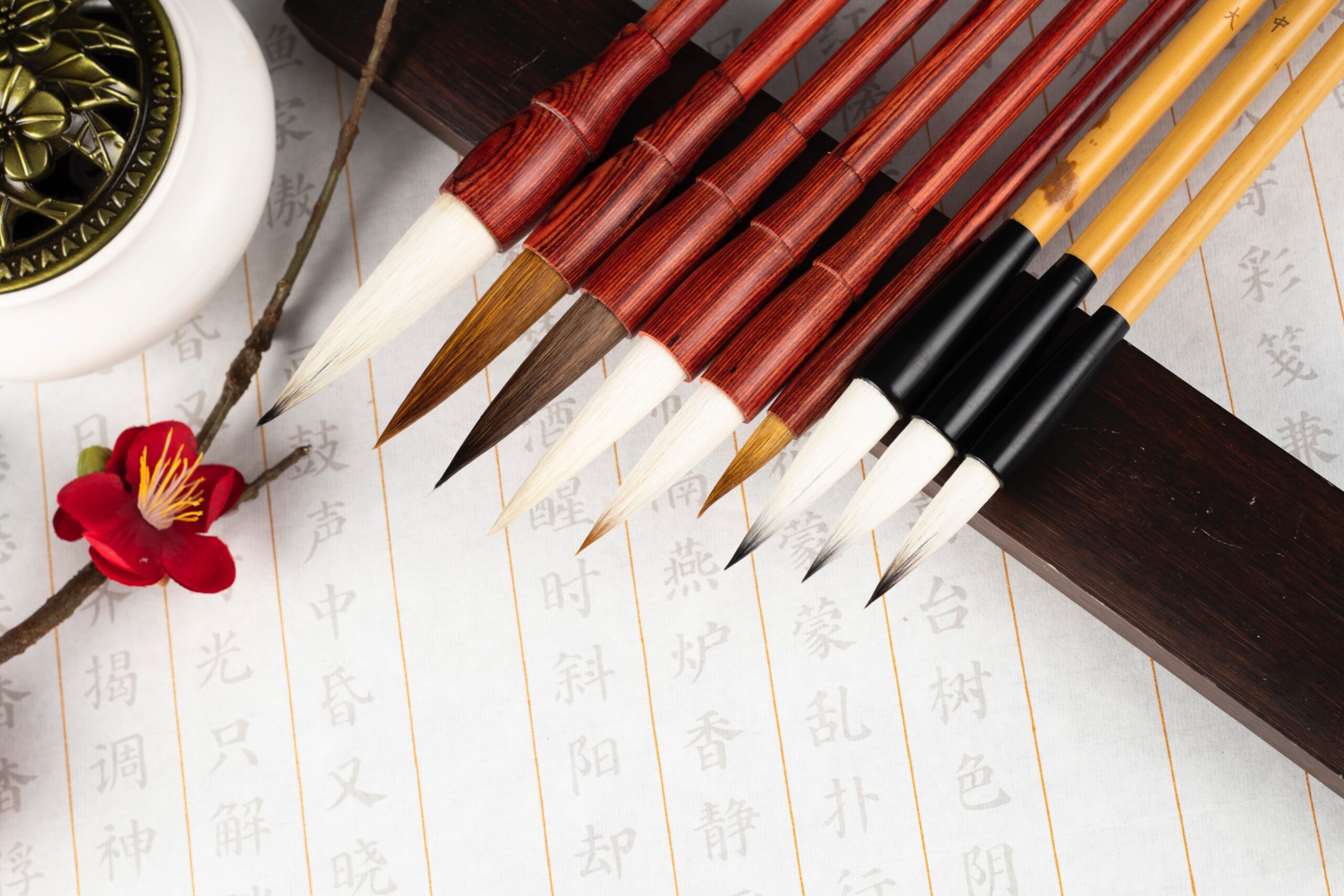An Introduction to what is needed
If you’re looking to explore the art of Japanese calligraphy, you’ll need a Japanese calligraphy set. A Japanese calligraphy set typically includes a brush, ink, inkstone, paper, and a weight to keep the paper in place while you write. But what exactly is Japanese calligraphy, and how did it come to be? In this article, we’ll dive into the history of Japanese calligraphy, the materials you’ll need in a Japanese calligraphy set, and the technique of Japanese calligraphy.
The History of Japanese Calligraphy
Japanese calligraphy, or shodo, has a long and rich history that dates back to the sixth century. It is believed to have been introduced to Japan by Buddhist monks who brought Chinese texts with them. Over time, Japanese calligraphy evolved into a distinct art form with its own unique styles and techniques.
One of the earliest forms of Japanese calligraphy was known as tensho, which means “heavenly writing.” This style was heavily influenced by Chinese calligraphy and was characterized by large, bold strokes. Over time, new styles emerged, including kaisho, which is a more formal style used for official documents, and gyosho, which is a more cursive style used for everyday writing.
During the Edo period (1603-1868), Japanese calligraphy became even more popular, and many artists began to experiment with new styles and techniques. One of the most famous calligraphers of this period was Yosa Buson, who is known for his unique blend of calligraphy and poetry.
Today, Japanese calligraphy remains an important art form in Japan and is practiced by people of all ages and skill levels.
Materials Needed in a Japanese Calligraphy Set
If you’re interested in trying your hand at Japanese calligraphy, you’ll need to have the right materials. A typical Japanese calligraphy set includes:
- Brush – The brush is the most important tool in Japanese calligraphy. It is usually made from animal hair, such as horse, goat, or wolf, and comes in a variety of sizes.
- Ink – Japanese calligraphy ink, or sumi, is made from soot and is available in both solid and liquid forms.
- Inkstone – An inkstone is used to grind the ink into a smooth consistency before use.
- Paper – Japanese calligraphy paper, or washi, is a high-quality paper that is thin and absorbent.
- Weight – A weight is used to hold the paper in place while writing.
While you can purchase each of these items separately, it’s often more convenient to buy them as a set. This ensures that all of the materials are compatible and makes it easier to get started with Japanese calligraphy.
The Technique of Japanese Calligraphy
Now that you have your materials, it’s time to start practicing your technique. The technique of Japanese calligraphy involves using the brush to create bold, expressive strokes on the paper.
- Preparation – Before you begin, make sure your brush is clean and free of any excess water. Then, grind the ink on the inkstone until it reaches the desired consistency.
- Posture – Proper posture is important in Japanese calligraphy. Sit up straight with your feet flat on the ground and your brush held at a comfortable angle.
- Stroke – To create a stroke, hold the brush upright and apply pressure to the bristles. Begin the stroke with a quick downward motion, then gradually release the pressure as you move the brush across the paper.
- Pressure – The pressure you apply to the brush will determine the thickness and intensity of the stroke. Experiment with different levels of pressure to create different effects.
- Speed – The speed at which you move the brush across the paper will also affect the appearance of the stroke. Try practicing slow, deliberate strokes for a more controlled look, or faster strokes for a more dynamic and expressive style.
- Consistency – Consistency is key in Japanese calligraphy. Try to maintain a consistent size and shape for each stroke, and keep the overall composition balanced and harmonious.
- Mindfulness – Japanese calligraphy is not just about technique, it’s also about mindfulness. Focus on the present moment and let go of any distractions or worries. Let the brush flow across the paper and allow your creativity to take over.
Examples of Japanese Calligraphy
Japanese calligraphy can be seen in a variety of settings, from museums and galleries to traditional tea ceremonies and martial arts dojos. Here are a few examples of how Japanese calligraphy is used in different contexts:
- Art – Many Japanese calligraphers create works of art that are displayed in galleries and museums around the world. These works often combine calligraphy with other artistic elements, such as painting or sculpture.
- Calligraphy competitions – In Japan, there are many calligraphy competitions held each year, where artists compete to see who can create the most beautiful and expressive works. These competitions are highly competitive and attract artists from all over the country.
- Zen Buddhism – Japanese calligraphy has a strong connection to Zen Buddhism, with many monks practicing calligraphy as a form of meditation. In Zen, calligraphy is seen as a way to express the essence of the moment and to connect with the divine.
- Martial arts – Japanese calligraphy is often used in martial arts, with many dojo displaying calligraphy scrolls that contain inspirational messages or quotes from famous martial artists.
Final Thoughts
In conclusion, Japanese calligraphy is a beautiful and expressive art form that has a long and rich history. Whether you’re interested in creating works of art, practicing meditation, or simply exploring a new hobby, a Japanese calligraphy set is the perfect way to get started. By practicing proper technique and cultivating mindfulness, you can develop your own unique style and create works that are both beautiful and meaningful.

